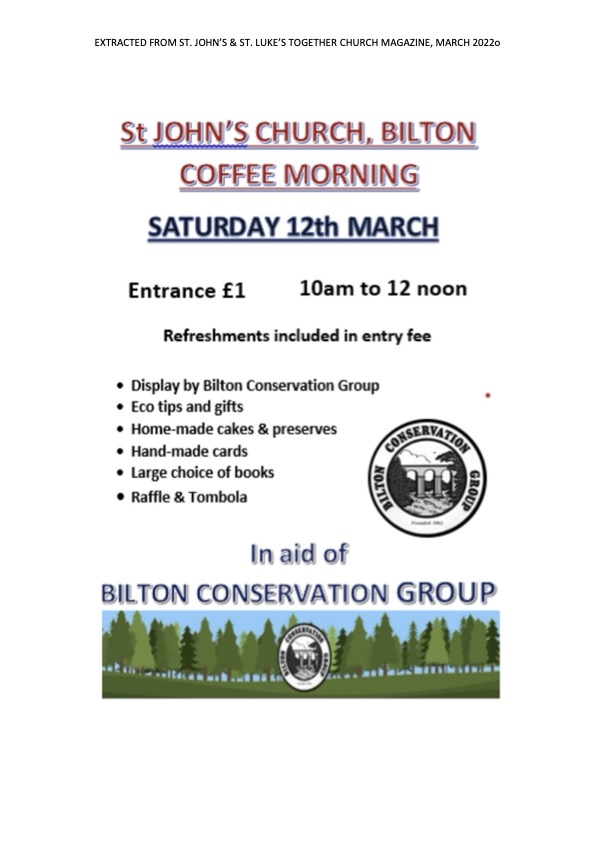The river Nidd takes its name from a Celtic word which is believed to mean ‘the shining one’.
It is easy to imagine, over 4000 years ago, when Celtic tribes roamed the treeless landscape of Nidderdale, that the wild river would glisten and sparkle in the sunlight in the valley bottom as indeed it does to this day.
The source of the river Nidd is almost 40 miles north-west of Harrogate, high up on the bare, windswept slopes of Great Whernside 1500 feet above sea level. Here a tiny stream joins others to fill the reservoirs of Angram, then Scar.
Growing ever stronger it cuts down through limestone before joining the flow from Howstean Gorge to swell the reservoir at Gouthwaite above Pateley Bridge.
In late summer the drab greys and browns of the exposed rocks of Upper Nidderdale yield to the lilac haze of heather, the bleating of sheep and the call of grouse. As we descend to Pateley and beyond the valley is green with trees and enough pasture to support cattle. Oaks are the main tree species here with some silver birch and ash. The rapid, winding, river is lined with alders; their gnarled roots gripping the banks and anchoring them to the river bed.
From here the narrow river is a major feature in the deep valley bottom; working its way through the villages of Glasshouses, Summerbridge, Birstwith, Hampsthwaite and the Parishes of Killinghall and Ripley; flowing over old mill races and dams where its restless energy used to turn water wheels to power corn, flax and saw mills.
The Age of Steam and water power has passed and few of those ancient water wheels survive. Today farmed trout leap in the sunshine in their special ponds alongside the Nidd at Low Laithe, while their slimmer and fitter wild cousins hold steady in the river currents waiting patiently for a careless mayfly. Silver grayling fight the rapids eyeing the angler’s artificial fly and its sharp hook with suspicion. A kingfisher in its orange and blue uniform perches on a branch, eye and sharp beak focussed on a shoal of minnows in the shallows ….
The untamed river is left to find its way swiftly through the Old Forest of Knaresborough, down Nidd Gorge and the town of Knaresborough itself, then meandering casually across the flat Vale of York before joining the river Ouse, onwards to the Humber and escaping into the North Sea at Kingston-upon-Hull.
……
Previous conservation projects affecting the river Nidd, mounted by the statutory agencies, have focused on the Area of Natural Beauty [AONB] in Upper Nidderdale. Today, agencies such as Natural England [NE], the Environment Agency [EA] and the Yorkshire Wildlife Trust [YWT] are discussing what may be possible to improve the environment of the middle and lower reaches of the Nidd down to its confluence with the river Ouse at Nun Monkton. Habitat restoration may be possible from Birstwith downstream to Nun Monkton to reconnect the river with its floodplain, improve habitats and reduce sedimentation.
Tree planting in appropriate areas could be important on banksides to reduce rapid run-off. Opportunities to improve recreational facilities may be identified which would benefit local populations. Closer and coordinated pollution controls could minimize the unfortunate incidents experienced for instance along the Oak Beck and the river Crimple; both major tributaries of the Nidd, and the much-neglected Bilton Beck which is culverted for most of its course (‘out of sight out of mind’). Attention could also be given to the possibility of installing eco-friendly flap valves, ‘fish ladders’ etc. on river installations to allow freer movement of migratory fish such as eels, salmonids and lampreys.
The adverse impacts of alien species such as North American Crayfish and Himalayan Balsam could be considered as well as the needs of rare and threatened animals like the native White-Clawed Crayfish, Water Vole, Water Shrew and Otter. An initial conference on the subject was hosted recently by the YWT in York to identify broad themes and possibilities. Clearly what may emerge will need the goodwill and support of all those landowners, farmers and utilities with a vested interest in the wellbeing of the Nidd. The same broad considerations will also be applied to the rivers Wharfe, Ure and Swale. 2015 promises to be an exciting year when the health of our environment will feature prominently at local and national level and we will play whatever small part we can to improve things.

